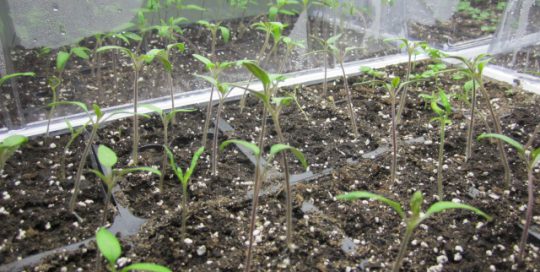Temperature.
Again, we want to recreate the ideal outdoor environment indoors. This means keeping the temperature comfortable for your plants. The general rule of thumb is if you’re comfortable then your plants are comfortable. I recommend keeping the temperature between 65F and 80F.
Air Circulation.
Plants grown indoors are typically seeded or planted close together. Close proximity can encourage plant diseases and pests such as fungus gnats. The presence of a small fan will move the air and keeps humidity levels balanced. Some research also indicates that air movement rustles the leaves, and that this “brushing” movement actually encourages growth.
Reboot Expectations
Before getting into the nuts and bolts of what you can grow inside, I want to stress the importance of resetting your produce expectations. Due to the limitations in space, you may need to harvest your crops at a smaller size than you would have outside. Perhaps your carrots are smaller than a pinky, or your beets just the size of a marble. Maybe you grow them for their leaves rather than their roots (carrot tops make excellent pesto!). It’s possible to grow onions indoors, but you’ll likely harvest them when they are the size of scallions. And, while heirloom tomatoes might be possible in a greenhouse, your home may limit you to the small tomato varieties used in patio containers.
Going hand in hand with realistic expectations, approach growing edibles indoors with a plan and a journal. Start small to test the waters. See how your plants perform on the windowsill. Experiment with a single lamp and a single type of vegetable. The first question to answer: is indoor plant care is something you have time for? Remember, it’s a different season with different obligations and schedules. If growing indoors gets you really excited after the first harvest, then feel free to keep adding to the size of your indoor growing experience.








